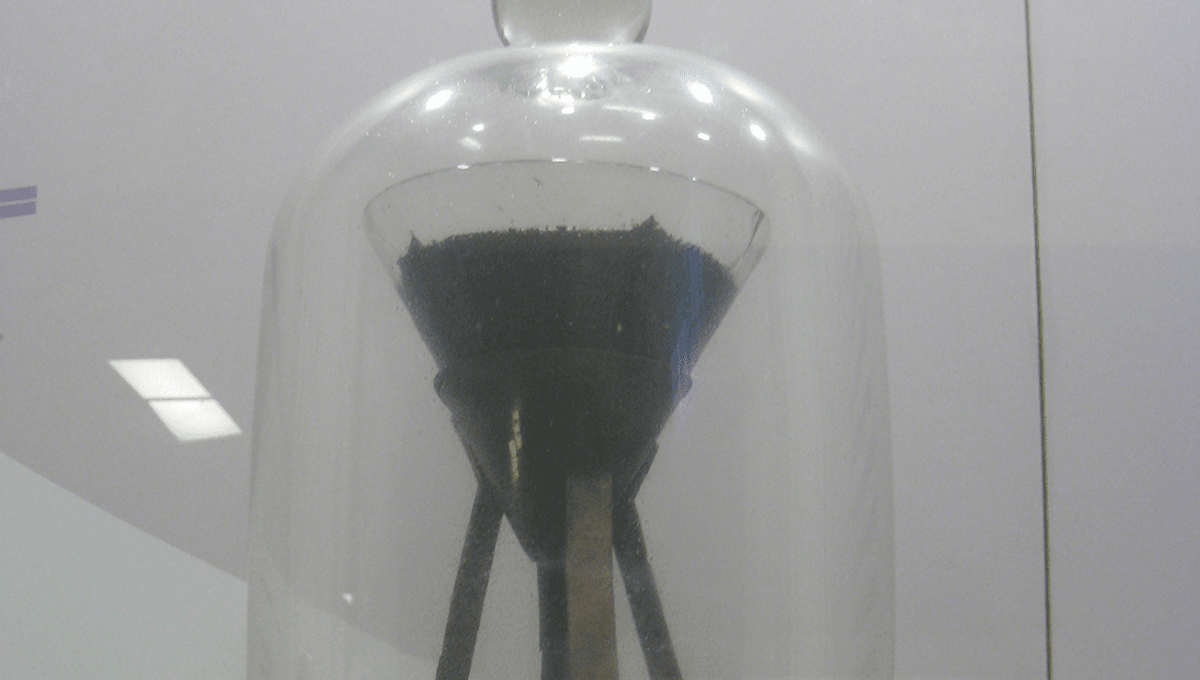
At the University of Queensland, there is a display containing the longest-running laboratory experiment in the world. It has been running so long that two of its custodians have died before they ever saw any results.
The experiment was initiated in 1927 by Thomas Parnell, the University’s first professor of physics. Intended as a demonstration of highly viscous materials, Parnell took pitch – residue from the distillation of coal tars – warmed it, placed it into a sealed glass funnel, and then waited three years for it to settle to the shape of the container. That might seem like a long time to wait for an experiment to experiment to even begin, but given the planned length of the demonstration, it was merely a long blink.
In 1930, Parnell cut the stem of the funnel, allowing the highly viscous liquid to slowly flow out of the bottom. The experiment has been running ever since, incredibly slowly. The first drop fell eight years after the experiment began, with a further five dropping over the next 40 years. The experiment has now been running for nearly 100 years, and has been under the charge of several different custodians. Parnell and his successor Professor John Mainstone both died without seeing the drop fall for themselves, with Professor Andrew White being the current custodian.
But now the experiment is under the constant watch of a webcam, meaning somebody may witness the next. The last drop (until another occurs) took place in 2014, seen here in heavily sped-up footage.
So, can the experiment tell us anything interesting?
Despite the experiment being less controlled than is ideal (it is subject to the fluctuations of room temperature, and the internal diameter of the stem cannot be accurately measured without the risk of damaging the experiment) it has a few surprises for us.
Taking a number of factors into account, it is possible to make a reasonable estimate of how viscous pitch is.
“The viscosity of pitch is then calculated as q = (2.3 +0.5) x 108 Pa s, which is enormous compared to that of common liquids,” a paper on the experiment explains. “Water at 20°C has a viscosity of 1.0 x 10-3 Pa s. It should be noted however that (ignoring superfluidity) it is close to the geometric mean of the range of values that physicists consider – the effective viscosity of the Earth is of the order of 1020 Pa s.”
This doesn’t fit well with previous predictions.
“The result for the viscosity from the pitch drop experiment does not agree well with the predictions based on [previous] measurements, even allowing for the enormous variation of viscosity with temperature and the rather unknown temperature history of the experiment,” the team writes. “The probable explanation lies in the differing viscosities of different samples of pitch – these could have dissimilar proportions of trapped volatile hydrocarbons and this would affect the viscosity.”
If you’d like to watch the experiment live, you can. Currently, there is a pretty big blob forming – but we wouldn’t recommend watching for too long as the next drop is expected to fall sometime in the 2020s, and there’s plenty of the decade left to go.
Source Link: The Longest-Running Laboratory Experiment In The World Is Streaming Live Right Now